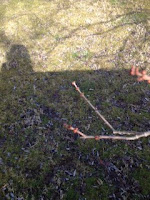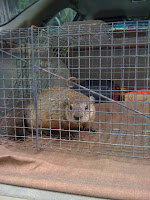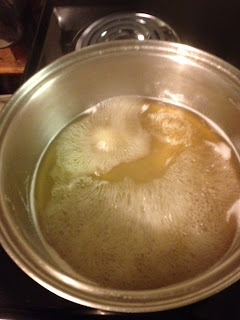Yesterday I pulled mile high weeds from the eastside of the garden. I have two sections. One section is for plants that like limey soil (Westside). The other is for plants that like acidic soil (Eastside). I don’t know what potatoes like but this was the only space I had left. On the other hand, they are right next to the Jerusalem artichokes which are also a root vegetable, so maybe they’ll be happy.
I planted red potatoes that I got from Aldi’s - a grocery store. They had bags of 10 seed potatoes for $.79. Pretty good deal. Some years back I bought some of Aldi’s Ever-bearing Red Raspberry plants. They are doing great. They also like acidic soil. I mulch them with bags of wood pellets that have gotten moisture in them and can’t be used in the stove. Sawdust makes a soil acidic.
It was hotter than blue blazes outside yesterday and with all the rain we’ve been getting the weeds are about four or five feet high. There is a lot of golden rod and ox eye daisies. I pulled and pulled and cleared an area out. Then dug and dug and got a patch about 7’ x 7’ cleared and put in 10 hills of potatoes. About 18” apart. Once they sprout, I’ll mulch them with straw to keep the spud itself from turning green.
In years past I had planted potatoes but always had a problem with Japanese Beetles eating the leaves. Curiously, I haven’t seen any Japanese Beetles in our yard for about three years now. I don’t know where they’ve gone or why they’re not around. I don’t know if this is a good thing or not. I haven’t seen many mud dauber wasps either. We used to have lots of them around.
I figured it might be a good time to try growing potatoes again on account of the lack of Japanese Beetles. Also, we’re planning on having a rabbit hunt here come fall and small game season and I think freshly dug red potatoes would taste good with rabbit roasted on the grill!
There is a folk cure for warts that I have used and find that for the most part it works. If you have a wart you must rub it with a potato that’s been cut in half under the light of the full moon, then bury the potato under a drip of a water spigot. If the potato sprouts, your wart will remain. If the potato doesn’t sprout, the wart will go away.
Here’s my theory: On the bag of the seed potatoes as well as on the Internet under How To Grow Potatoes, it is suggested that only seed potatoes be planted. It says that regular grocery store potatoes may not grow on account of stuff that is put on them to keep the potato from sprouting. I figure it’s this stuff that kills warts. So if the potato doesn’t sprout, it’s been sprinkled with this stuff. If it does sprout, it hasn’t. Only use a grocery store potato that hasn't sprouted on your warts.
I don’t know what the full moon has to do with any of this, except that it sounds good.
I planted red potatoes that I got from Aldi’s - a grocery store. They had bags of 10 seed potatoes for $.79. Pretty good deal. Some years back I bought some of Aldi’s Ever-bearing Red Raspberry plants. They are doing great. They also like acidic soil. I mulch them with bags of wood pellets that have gotten moisture in them and can’t be used in the stove. Sawdust makes a soil acidic.
It was hotter than blue blazes outside yesterday and with all the rain we’ve been getting the weeds are about four or five feet high. There is a lot of golden rod and ox eye daisies. I pulled and pulled and cleared an area out. Then dug and dug and got a patch about 7’ x 7’ cleared and put in 10 hills of potatoes. About 18” apart. Once they sprout, I’ll mulch them with straw to keep the spud itself from turning green.
In years past I had planted potatoes but always had a problem with Japanese Beetles eating the leaves. Curiously, I haven’t seen any Japanese Beetles in our yard for about three years now. I don’t know where they’ve gone or why they’re not around. I don’t know if this is a good thing or not. I haven’t seen many mud dauber wasps either. We used to have lots of them around.
I figured it might be a good time to try growing potatoes again on account of the lack of Japanese Beetles. Also, we’re planning on having a rabbit hunt here come fall and small game season and I think freshly dug red potatoes would taste good with rabbit roasted on the grill!
There is a folk cure for warts that I have used and find that for the most part it works. If you have a wart you must rub it with a potato that’s been cut in half under the light of the full moon, then bury the potato under a drip of a water spigot. If the potato sprouts, your wart will remain. If the potato doesn’t sprout, the wart will go away.
Here’s my theory: On the bag of the seed potatoes as well as on the Internet under How To Grow Potatoes, it is suggested that only seed potatoes be planted. It says that regular grocery store potatoes may not grow on account of stuff that is put on them to keep the potato from sprouting. I figure it’s this stuff that kills warts. So if the potato doesn’t sprout, it’s been sprinkled with this stuff. If it does sprout, it hasn’t. Only use a grocery store potato that hasn't sprouted on your warts.
I don’t know what the full moon has to do with any of this, except that it sounds good.
































